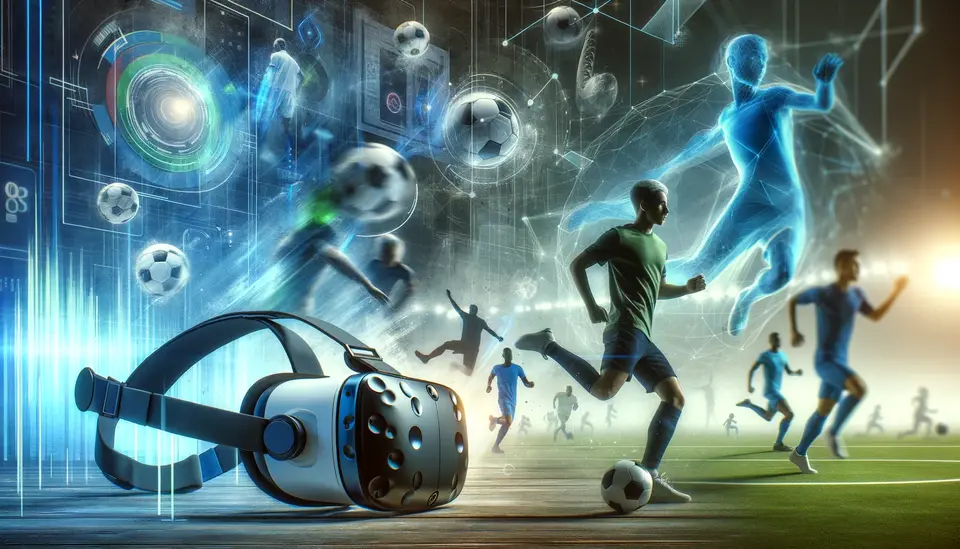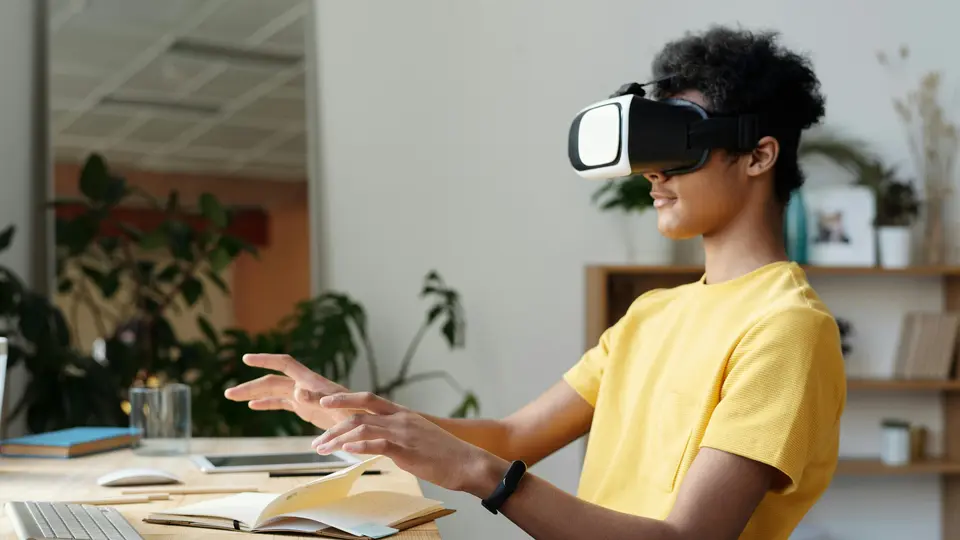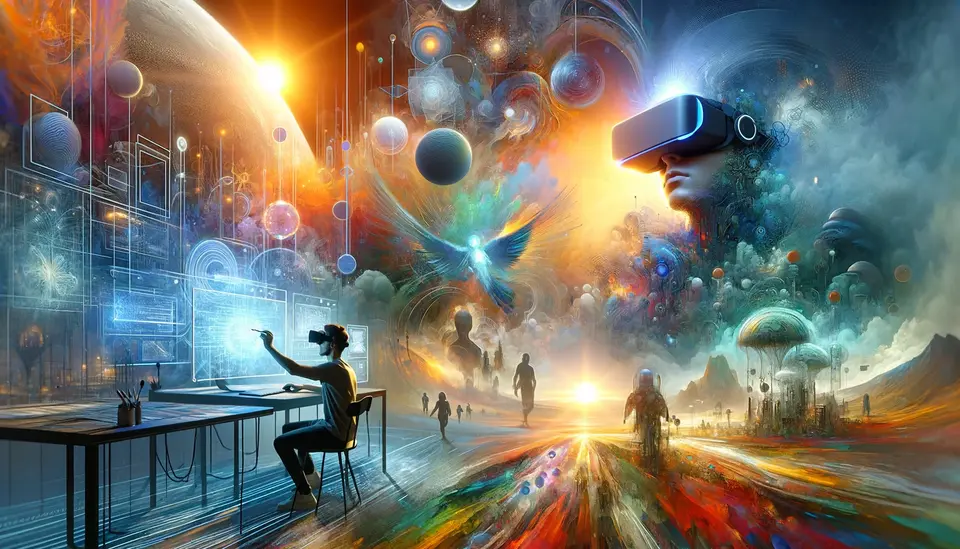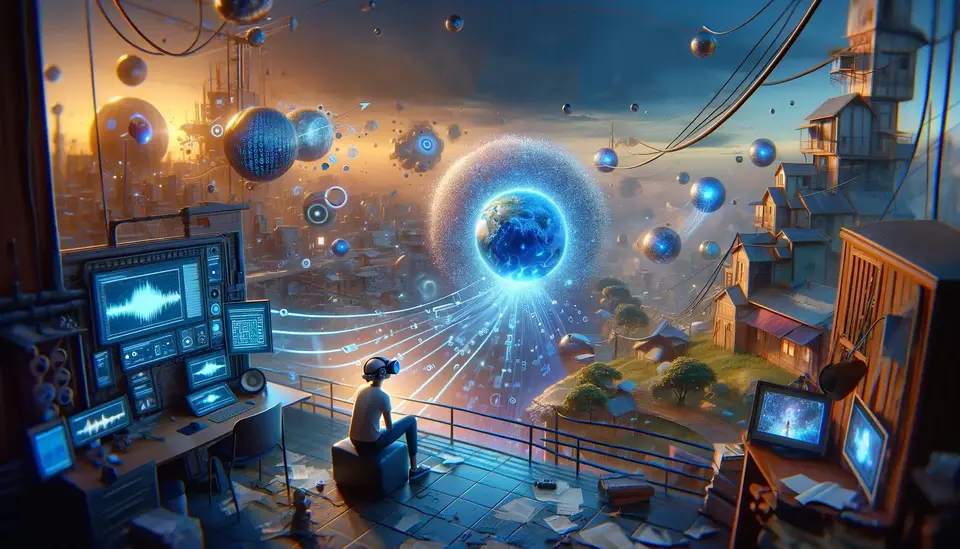5 Benefits of Virtual Reality (VR) in Our Lives
Posted on August 14, 2023 14 minutes 2900 words
Table of contents
Virtual Reality (VR) has rapidly transitioned from a novelty into a transformative tool with applications across various sectors. Beyond the captivating worlds of gaming, VR has woven its way into our education, healthcare, training, entertainment, and architectural endeavors, heralding a new era of immersive experiences. Let’s explore five monumental ways VR is enhancing our world.
1. Enhanced Learning and Education Through Virtual Reality
Step beyond textbooks and classrooms. With VR, learning becomes an interactive journey, where historical epochs come alive, lessons tailor themselves to individual pace, and geographical confines fade away.
Immersive Experiences
When it comes to learning, there’s a vast difference between being told and being shown. Now imagine going a step further—being placed directly into the experience. Studying ancient Rome? Don’t just read about the Forum or gaze at illustrations of gladiators. With VR, students can virtually stand amidst Roman citizens, watching senators debate or artisans at work. They can hear the bustling chatter, feel the ambiance of the period, and walk the very streets once trodden by emperors. This intense immersion goes beyond mere visualization. It leads to an emotional connection with the subject, deepening understanding. Subjects become memories, almost as if one lived them, leading to better engagement and retention.

Tailored Learning
Every educator knows that a one-size-fits-all approach is rarely effective. Students come with diverse backgrounds, abilities, and learning curves. Traditional classrooms often struggle to cater to these individual needs, which can leave some students feeling left behind while others aren’t adequately challenged. Enter VR’s adaptive learning environments. If a student hesitates over a math problem in a virtual lesson, the program can detect this and offer supplementary explanations or tutorials. On the other hand, a student who breezes through a lesson might be given additional problems to solve or moved to a more challenging module. This real-time adaptability ensures every student is engaged at their level, promoting better understanding and enthusiasm for learning.
Reduced Physical Limitations
The confines of a physical classroom have limitations, not least of which is capacity. But with VR, the walls of the classroom dissolve. A student in Tokyo can share a virtual learning space with another in Nairobi and yet another in Toronto. They can embark on a virtual field trip to the Amazon rainforest together or collaborate on a project in a simulated lab. This borderless learning environment does more than just make education more accessible. It fosters collaboration among diverse groups of students, allowing them to share perspectives and cultures. In essence, VR not only educates about the subject at hand but also about global citizenship, nurturing a generation more attuned to international cooperation and understanding.
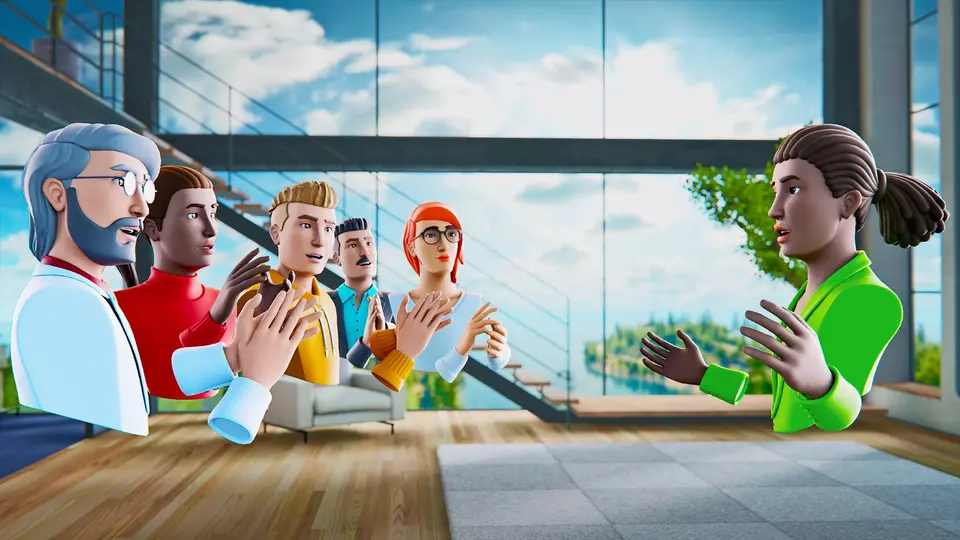
Incorporating Real-world Context
The advantages of VR in education don’t stop at the historical or geographical. Think about physics, for instance. Instead of static equations on a board, students can manipulate virtual objects, seeing in real-time how different forces interact. Or in literature, rather than just reading a play by Shakespeare, they can stand on stage with the characters, understanding the play’s nuances through tone, setting, and even the background events.
Safety and Simulated Environments
Especially relevant for higher education and specialized courses, VR offers safe environments for trial and error. Medical students can practice surgeries, aspiring pilots can take to the skies, and chemistry enthusiasts can conduct experiments—all without real-world risks. Mistakes become learning opportunities, not catastrophes.
Virtual Reality in education promises a revolution, turning passive learning into an active, immersive experience. As the technology becomes more widespread and sophisticated, the possibilities for how it can enhance and democratize education are only bound to expand.
2. Revolutionizing Healthcare with Virtual Reality
Healthcare meets technological marvel. VR provides tools for therapists to control exposure settings, offers surgeons rehearsal time, and empowers patients on their recovery journey.
Virtual Therapy
A controlled and safe environment enables therapists to recreate scenarios that help in dealing with various phobias and traumas.
-
Battling Phobias: Traditional therapeutic techniques often involve controlled exposure to confront and manage fears, but with VR, this process becomes significantly more versatile. For someone with acrophobia (fear of heights), they can virtually stand on top of a skyscraper, feeling the initial anxiety in a safe setting and gradually building resilience. The beauty of VR therapy is the ability to precisely control and adjust the exposure levels. This means therapists can customize the experience to each patient’s needs and progress, making the treatment process more efficient and less traumatic.
-
Support for PTSD: Post-Traumatic Stress Disorder, especially prevalent among war veterans, can be debilitating. Conventional treatments sometimes require recalling traumatic events, which can be distressing. In a VR environment, patients can revisit these memories in a controlled space. Over time, by facing and processing these experiences, the goal is to reduce the associated anxiety and trauma.
Rehabilitation
Customized VR settings help in monitoring patient progress post-trauma or surgery, leading to faster recovery timelines.
-
Virtual Physical Therapy: The road to recovery after a debilitating incident can be long and mentally taxing. With VR, the process becomes more engaging. For instance, a game where a patient needs to reach out to catch virtual objects can double as a mobility exercise. Such an approach can make therapy sessions more enjoyable, leading to increased patient engagement and, potentially, quicker recoveries.
-
Precision Monitoring: One of VR’s standout features is its ability to track movements with extreme precision. This means that during a therapy session, every small improvement, every minor change in a patient’s mobility or strength, can be monitored. Such data can be invaluable for medical professionals to track progress, adjust treatments, and provide feedback.
-
Cognitive Rehabilitation: For patients who have suffered traumatic brain injuries or strokes, VR can offer cognitive exercises and simulations to aid in their recovery. Whether it’s memory games or problem-solving tasks, VR can adapt to a patient’s cognitive level and provide increasingly challenging tasks as they recover.
Medical Training
Before any real-world applications, medical students can rehearse procedures in VR, enhancing skill and reducing errors.
-
Surgical Simulations: The world of surgery requires a combination of knowledge and finesse. Before VR, surgeons often had to rely on cadavers or simulations for practice. With VR, not only can they practice intricate procedures, but they can also simulate rare cases or complications, ensuring they’re prepared for a range of scenarios. This kind of repeated, risk-free practice can significantly improve the success rates of real-world surgeries.
-
Holistic Medical Training: Beyond surgeries, think of a dental student understanding the intricacies of a root canal procedure or a nurse learning the correct technique for a particular treatment. VR offers a hands-on approach, making the learning curve smoother and more practical. Furthermore, it allows trainees to make and learn from mistakes without real-life consequences, instilling confidence for real-world applications.
-
Patient Education: It’s one thing for a doctor to explain a procedure or condition verbally, but with VR, patients can get a visual and immersive understanding. This can alleviate fears, set correct expectations, and improve overall patient satisfaction and cooperation.
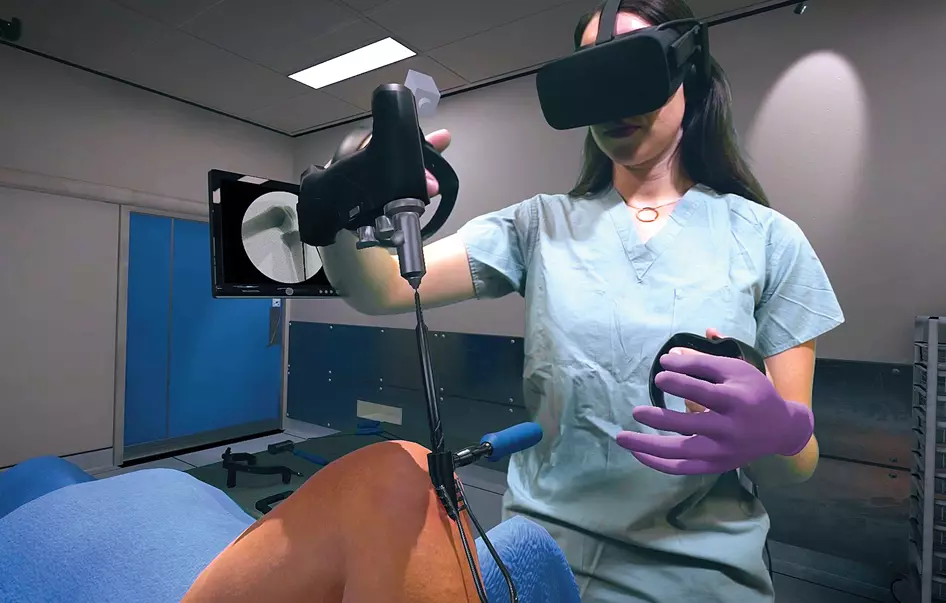
The potential of Virtual Reality in healthcare is profound. As technology continues to evolve, and as more healthcare professionals incorporate and recognize its benefits, VR is set to reshape and redefine many aspects of patient care, training, and therapy. It’s not just about technology but about adding a human touch, making treatments more patient-centered, and healthcare more holistic.
3. Improved Training and Simulation with Virtual Reality
Train like it’s real without the risks. With VR, training sessions replicate real-world challenges, develop diverse skills, and even shift perspectives to foster empathy.
Realistic Scenarios
From aviation to military, trainees face high-stakes situations in a zero-risk setting, preparing them for real-world challenges.
-
Training Without Consequences: For professions where mistakes can cost lives, training in a realistic but controlled environment is invaluable. Think of pilots navigating thunderstorms or soldiers navigating urban warfare. VR provides an environment where they can face these scenarios time and again, refining their skills, learning from each mistake, and building muscle memory without the dire consequences of real-world mistakes.
-
Varied & Adaptive Challenges: In the real world, some scenarios are rare, but that doesn’t mean they aren’t critical. VR allows professionals to not only train for the commonplace but also for the unexpected. The training modules can be adaptive, presenting more challenging situations as the trainee’s skill level improves, ensuring comprehensive preparation.
Skill Development
Master a plethora of skills in controlled VR environments, ensuring proficiency before real-world application.
-
Overcoming Personal Fears: Virtual Reality isn’t just about mimicking the external world—it can also help individuals conquer internal challenges. For instance, glossophobia, or the fear of public speaking, affects many. With VR, individuals can stand on a virtual stage, face a responsive audience, and gradually build confidence. Each session can provide feedback—on body language, voice modulation, and more—helping individuals refine their skills.
-
Versatile Application: Beyond public speaking, VR’s applications for skill development span a wide spectrum. Imagine a construction worker operating a virtual crane or a salesperson simulating a tough client negotiation. VR can provide a safe yet realistic space for people to practice and perfect myriad skills, ensuring they’re better equipped for real-world challenges.
-
Instant Feedback Loop: One of VR’s most significant advantages is its ability to provide real-time feedback. Whether it’s about the grip on a tool, the stance during a physical activity, or the pitch during a speech, VR can offer instant data and insights, allowing for quicker refinements and learning.
Empathy Training
Witness the world from varied lenses, fostering understanding and cultivating a workspace that values diversity and inclusion.
-
Experiencing Different Perspectives: It’s often said that to understand someone, you should walk a mile in their shoes. VR literally allows for this. Corporates can use VR to simulate experiences of different employees. For example, understanding the challenges faced by a wheelchair-bound colleague in office or experiencing the microaggressions someone of a different race might face daily.
-
Enhanced Corporate Training: Inclusion and diversity aren’t just buzzwords—they’re critical for a harmonious and productive work environment. VR can be a potent tool for HR departments. Traditional workshops might provide information, but VR simulations lead to experiences, and these experiences can fundamentally shift perspectives and promote a more inclusive work culture.
-
Building Compassion: Beyond the corporate world, empathy training can have broader societal applications. Think of police officers being trained to handle diverse communities better or teachers understanding the varied backgrounds and challenges of their students. By promoting understanding and compassion, VR can be a catalyst for positive societal change.
Virtual Reality, in the context of training and simulation, is a game-changer. It transcends the limitations of traditional training methods, offering immersive, adaptable, and impactful learning experiences. As industries recognize its potential, it’s likely that VR will become an integral part of professional and personal skill development in the future.
4. Elevated Entertainment Experiences with Virtual Reality
The line between audience and participant blurs. VR thrusts users into the heart of games, far-off places, and live events from the comfort of their homes.
Immersive Gaming
It’s not just playing; it’s living inside the game, experiencing every storyline firsthand.
-
Bridging Reality and Fantasy: Gone are the days when players were mere observers or controllers from behind a screen. With VR, they step directly into the game’s universe. Whether it’s a post-apocalyptic landscape, an alien planet, or a historical recreation of medieval Europe, gamers experience these worlds viscerally, with their senses deeply engaged.
-
Interactive Narratives: The plot isn’t just something to follow—it’s something to shape. With VR, decision-making becomes more intense. Players can have face-to-face interactions with in-game characters, pick up objects and examine them, or even affect the game environment, making the story progression feel organic and deeply personal.
-
Physical Engagement: VR gaming isn’t just a visual feast. Many games require players to move, duck, dodge, or even dance! This adds a layer of physicality to the experience, blurring the lines between digital entertainment and physical activity.
Virtual Tourism
-
Unparalleled Exploration: The pyramids of Egypt, the icy landscapes of Antarctica, or the colorful bazaars of Marrakech—all are within reach through a VR headset. Users aren’t just viewing these places; they’re experiencing the ambiance, the sounds, the climate, all from the comfort of their homes.
-
Educational Insights: Beyond just sightseeing, VR tourism platforms often incorporate rich information about the sites. So, as users explore the Colosseum in Rome, they can access historical data, anecdotes, or even guided tours, making the virtual journey not only enjoyable but also educational.
-
Eco-friendly Travel: Virtual tourism could play a significant role in promoting sustainable travel. Some natural habitats, which are fragile and at risk from excessive tourism, can still be showcased and appreciated without physical footfall, thanks to VR.
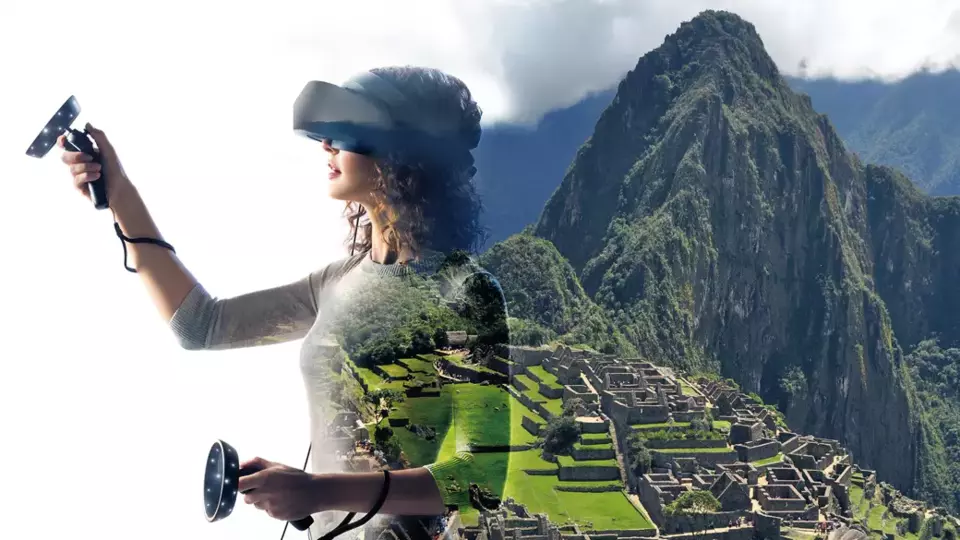
Live Events
Missed that concert ticket? No worries. VR ensures you still get the front-row experience.
-
Front Row, Every Time: No more lamenting over sold-out tickets or obscured views. With VR, every user can have the best seat in the house. Experience the exhilaration of a live concert, feel the tension of a football final, or even partake in an international conference—all recreated with acute precision to give the user a genuine “being there” feeling.
-
Social Integration: Modern VR platforms offer social features. So, even if you’re experiencing an event solo at home, you can chat with other virtual attendees, discuss plays in a game, or dance along with others during a concert.
-
Diverse Experiences: Beyond the mainstream events, VR also offers a platform for niche interests. Attend a poetry reading from a café in Paris, join a drum circle in Africa, or take part in a traditional tea ceremony in Kyoto—all experiences that might be rare or inaccessible in the physical world, but are readily available in the virtual one.
The realm of entertainment has been forever transformed by Virtual Reality. It has shifted from being a passive medium to a richly interactive, deeply engaging, and all-encompassing experience. As technology continues to evolve, the boundaries of what we can experience, learn, and feel through VR seem almost limitless.

5. Architectural and Design Visualization with Virtual Reality
See it before it stands. VR offers architects a preview of their creations, ensures clients understand what’s on offer, and revolutionizes property viewings.
Prototyping
Live inside your designs, making adjustments and refinements long before construction begins.
-
Design Evolution: The traditional design process often involved countless sketches and models before arriving at the final blueprint. With VR, architects can immerse themselves in their creations early on, identifying potential issues or areas of improvement. This iterative process, with the architect stepping in and out of their designs, leads to matured and refined final outcomes.
-
Dynamic Adjustments: As architects navigate these virtual prototypes, they can make on-the-fly adjustments. Whether it’s shifting a wall, changing the lighting, or modifying the room’s flow, VR allows instant design tweaks, speeding up the ideation process.
-
Holistic Considerations: In a VR environment, architects can simulate different times of the day or even different seasons. This aids in making informed decisions about aspects like natural light optimization or how a space might feel in winter versus summer.
Client Presentations
An immersive walkthrough gives clients a clearer understanding, ensuring they’re aligned with the vision and design.
-
Tailored Experiences: Rather than showing clients 2D renders or physical models, architects and real estate agents can walk them through a virtual rendition of the property. Clients can request changes or visualize customizations like furniture placements or wall colors, giving them a personalized preview of the final product.
-
Confidence in Investment: A detailed, immersive VR tour can assuage many client concerns. They can experience spatial dimensions, layouts, and aesthetics firsthand, leading to greater trust in the project and often quicker decision-making.
-
Collaborative Input: VR isn’t a one-way street. During these virtual walkthroughs, clients can provide real-time feedback. This collaboration ensures that the final design aligns closely with the client’s vision and requirements.
Virtual Property Tours
Potential buyers or tenants experience properties deeply and comprehensively, saving time and making informed choices.
-
Global Accessibility: Imagine a potential buyer in New York considering a property in London. With VR, geographical boundaries blur. They can undertake a detailed tour without setting foot on a plane, making international property transactions smoother and more common.
-
Efficiency Boost: For real estate agents, coordinating physical property visits can be time-consuming and logistically challenging. Virtual tours streamline this process. An agent can showcase multiple properties in a single session, providing buyers with a broader range of options in a condensed timeframe.
-
In-depth Exploration: Unlike hastily conducted physical tours, virtual visitors can spend as much time as they desire in each room, revisit areas of interest, or even visualize the space at different times of the day. This thorough exploration ensures informed purchasing decisions.
Virtual Reality is revolutionizing the world of architecture and design. By bridging the gap between imagination and reality, VR offers professionals unparalleled tools for creation, collaboration, and presentation. As the technology continues to advance, its impact on how we design, modify, and experience spaces will only grow more profound.
Conclusion
Virtual reality’s reach extends far beyond what was once imagined. From enhancing education to revolutionizing industries, VR is redefining the boundaries of our experiences. As technology advances, it’s exciting to envision how much more VR will integrate into and enrich our daily lives.


